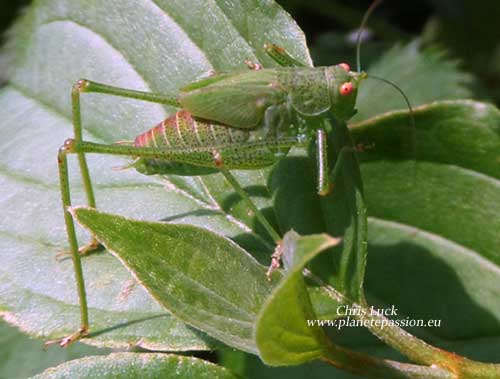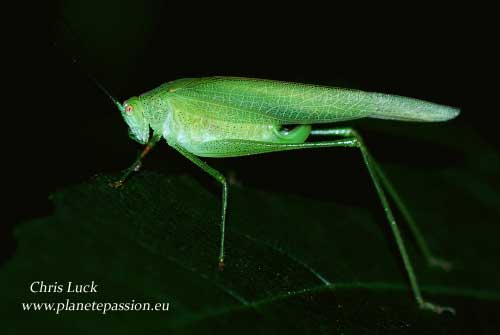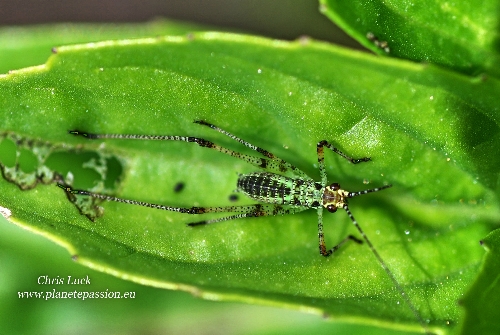Southern sickle-bearing bush cricket Phaneroptera nana
Phanéroptère méridional
(Mediterranean Katydid or 4 spot Bush Cricket)
This Bush Cricket closely resembles the neighbouring species, Phaneroptera falcata .
They have a higher temperature requirement than Phaneroptera falcata which tends to be more common in the north of France although it is a species that is increasingly extending its range northwards with climate change.
Mainly in the southern half of France extending to somewhat north of the Loire river.
Adults are normally to be seen from August until October. Mainly active at night they are often barely audible to the human ear but can usually be seen fairly easily in the daytime on vegetation. Females of this species also respond to males by stridulating.
They are a vegetarian species that frequents open spaces, woodland clearings, gardens and hedgerows.





